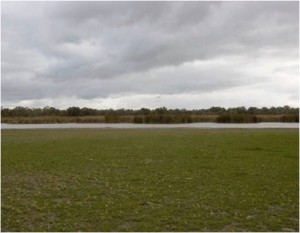
The Great Cumbung Swamp
The Great Cumbung Swamp is listed in the Directory of Important Wetlands and includes a variety of wetlands areas. The terminal swamp of the Lachlan River, Great Cumbung Swamp, is of national conservation significance because it contains one of the few remnant examples of Common Reed (Phragmites australis) swamps that were once widespread (Driver et al., 2002).The swamp is approximately 15,000 ha, with 4000 ha supporting reed beds, although this area has been reduced due to drought and altered flow regimes. Its current condition is considered poor to critical due to hydrologic and land management pressures.
Over 131-bird species have been recorded in these swamps and lakes, and the area also supports a diverse range of flora with 207-plant species listed, 120 of which are water plant species (Capon et al., 2008 p.16). The greater swamp complex also supports one of the largest River Red Gum woodlands in NSW with over 50,000 ha of River Red Gum located in the area (MDBA, 2011a). Associated with the Great Cumbung Swamp are also numerous smaller, relatively discrete wetlands of a diverse variety of wetland types, such as riverine floodplains, intermittent freshwater lakes and floodplain lakes, permanent freshwater ponds, seasonally flooded meadows and sedge marshes, permanent marshes and swamps, shrub swamps and freshwater swamp forest (see Table 2 in Capon et al. 2008). Lignum Lake, for example, is a large open lake and the surrounding floodplain is covered by River Red Gum with areas of Black Box woodland.
The system supports a number of waterbird species considered vulnerable at state level. These include the Australasian Bittern (Botaurus poiciloptilis), Freckled Duck (Stictonetta naevosa), Magpie Goose (Anseranas semipalmata) and Blue-billed Duck (Oxyura australis). Species listed under JAMBA and/or CAMBA include the Great Egret (Ardea alba), Glossy Ibis (Plegadis falcinellus), White-bellied Sea-eagle (Haliaeetus leucogaster), Sharp-tailed Sandpiper (Calidris acuminata), Latham’s Snipe (Gallinago hardwickii) and the Common Greenshank (Tringa nebularia).
The features and requirements of some of the areas within the Great Cumbung Swamp are provided below.
The Reed Bed is located on the property ‘Boyong’ in the centre of the Great Cumbung Swamp, represents approximately 4000 ha, and provides drought refuge and can support a large number of waterbirds. It is also an Integrated Monitoring of Environmental Flows (IMEF) site and has a number of floodplain structures which allow it to be managed as a unit.
Lignum Lake is a large open lake located on the property ‘Juanbung’ within the Great Cumbung Swamp. The surrounding floodplain is covered by River Red Gum with areas of Black Box (Eucalyptus largiflorens) woodland.
This wetland system supports large numbers of waterbirds, many of which breed in the area.


